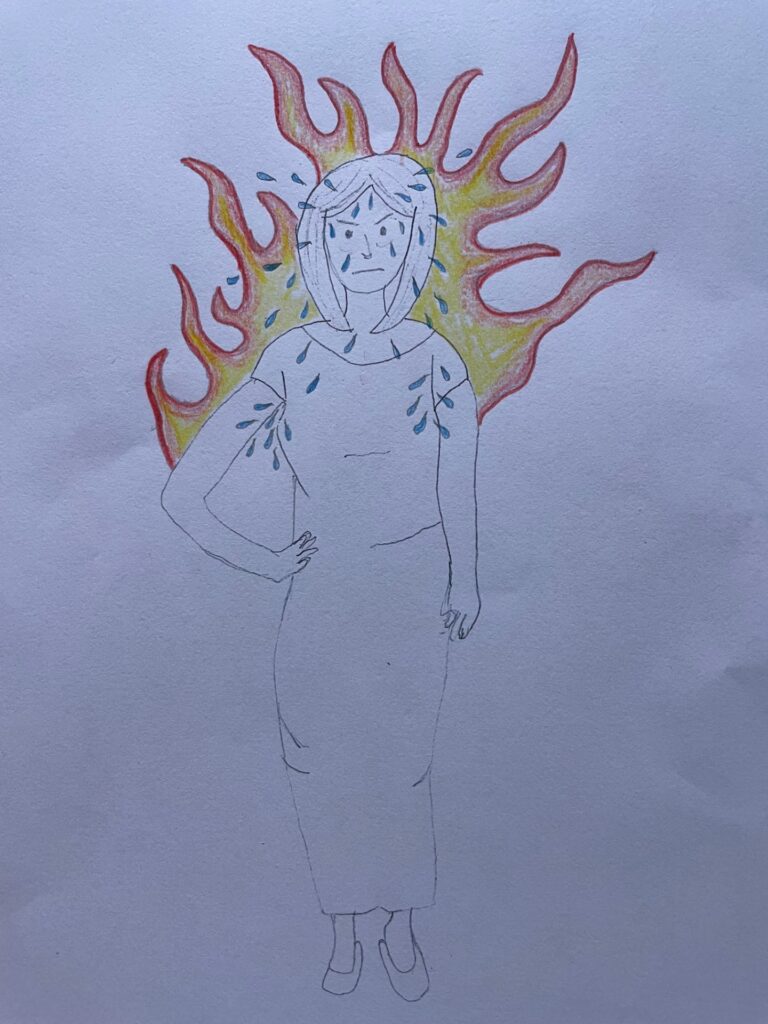
The objective of my project is to explain how the endocrine system and nervous system interact with each other. As part of the endocrine system, estrogen has a direct effect on nervous system regulation of body temperature. My project is a drawing depicting a woman experiencing vasomotor symptoms. It showcases the 2 main symptoms of a hot flash: sweating and intense heat sensation.

Menopause is a normal part of aging in females. Unfortunately, for women going through menopause, they experience vasomotor symptoms. This is essentially the outcome of the direct effects of the endocrine system as it interacts with the nervous system. In other terms, vasomotor symptoms is the technical term for hot flashes and night sweats that we most commonly see in women going through menopause. In fact, up to 80% of women undergo these symptoms.
Ovarian function declines and estrogen levels will drop off as well. Estrogen is responsible for the thermoregulatory center, the hypothalamus. However, regardless if women experience these symptoms, the estrogen levels are still decreasing. It is believed that the thermoneutral zone is narrowed immensely during menopause and it causes an increase in norepinephrine levels in the brain. This leads to the “false alarm” that the body is overheating. However, it is too late as the hypothalamus has already triggered a cascade of physiological responses that together are known as the hot flash.
Amy’s steam project was a drawing depicting the physiological presentation of a hot flash. Her project objective was related to “explain how the endocrine system and nervous interact with each other”.
Good job, Amy!